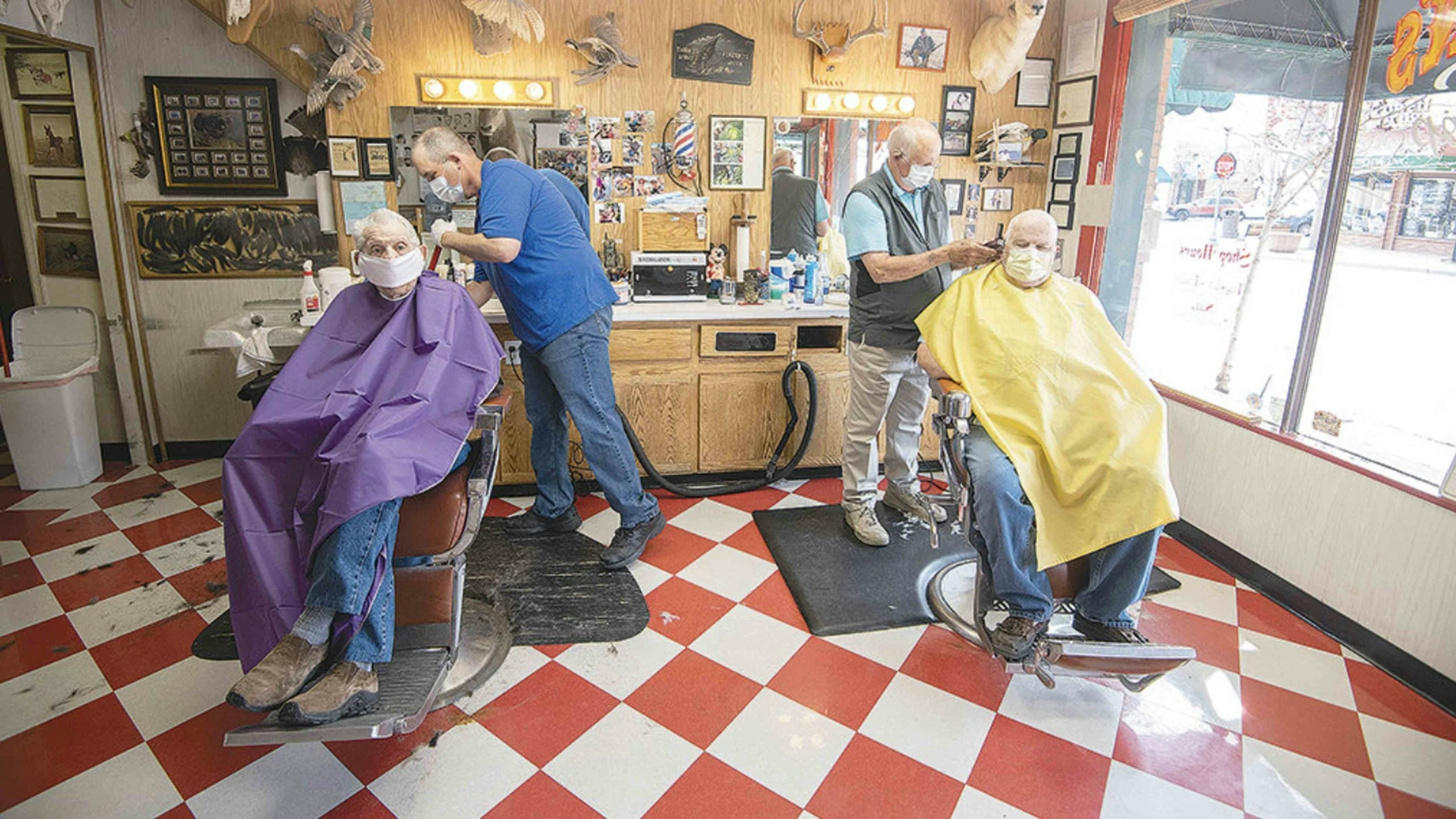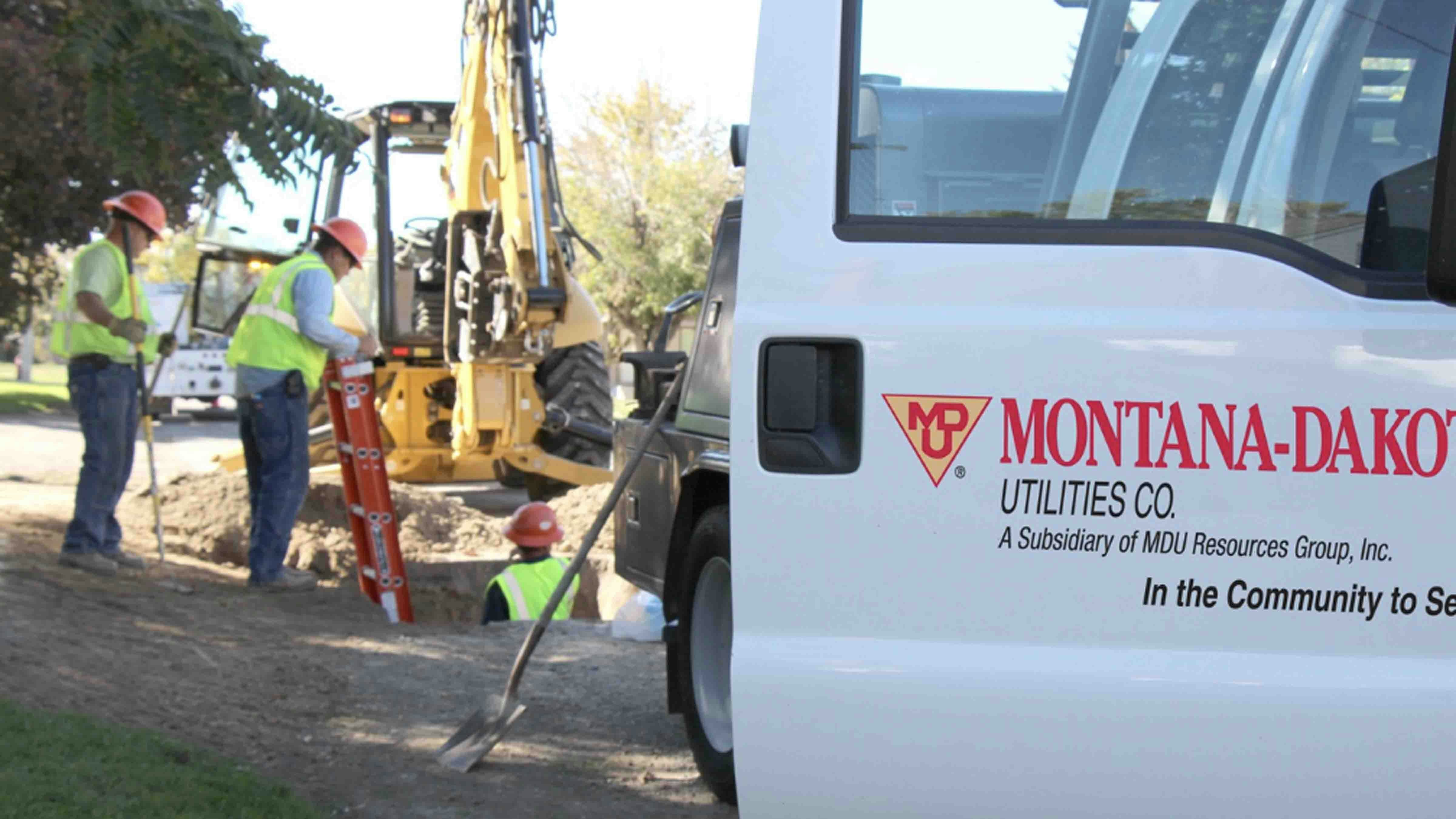By CJ Baker
Wyoming’s barbershops, gyms and salons were cleared to reopen under new guidelines Friday, with Park County restaurants — who’ve been limited to takeout for more than a month — allowed to offer outside dining. Meanwhile, limited indoor dining might not be too far off, as state and Park County health officials slowly ease off of restrictions aimed at curbing the spread of COVID-19.
“When this began, the risk [of not implementing restrictions] outweighed the benefit,” Park County Health Officer Dr. Aaron Billin told county commissioners on Friday. “We’re now approaching the point where the scales are tipping back in the other direction.”
On Friday, the county became the first in the state to relax to allow restaurants to offer outdoor dining after getting a special variance from state officials. Data indicates the risk of transmitting the new coronavirus is much lower outdoors, but restaurants still must take additional precautions — including facial coverings and disposable gloves for staff and 6 feet of space between tables.
Commissioners also encouraged Billin to go further and to also allow indoor dining as soon as possible. They specifically questioned why restaurants can’t reopen on a limited basis, when grocery stores, for instance, remain open to many customers.
“One hundred seventy eight people can go in Albertsons and I can have four old ladies smashing my cart getting the root of the last rutabaga, but you can’t have 10 [people inside an enclosed room]? Reconcile that logic for me,” said Commissioner Jake Fulkerson.
Billin said he’s heard that question many times and said state health
officials have taken the position that “you cannot close or put too much restrictions on grocery stores, because people gotta eat.”
But Commissioner Lee Livingston pressed the doctor on what he should tell constituents who see hundreds of people shopping at stores like Walmart.
“I go in there and I’m running into more people there than I would in a restaurant. And we haven’t seen an explosion; we haven’t seen a spread [of COVID-19],” Livingston said. “So we’re doing this and we’re not seeing a spread, but we can’t do this [open restaurants] because we might see a spread?”
Later in the meeting, Park County Public Health Nurse Manager Bill Crampton told commissioners that local health officials plan to begin drafting a request for a second variance as soon as possible. Crampton said that order — which could perhaps take a week to 10 days to finalize — would probably allow restaurants to reopen with at least 10 feet of space between tables, among other precautions.
“Once everybody agrees to that wording, we’re going to fire it off [to the state], too,” Crampton said. “We don’t want this to take any longer than anybody else.”
Frustration has been growing among local residents and business owners who are losing money — and stand to lose much more if the restrictions continue into the busier summer months.
Commission Chairman Joe Tilden said he’d heard from a North Fork restaurateur who put her life savings into her business — and if she doesn’t get some revenue in May, they’ll be out of business by June. Tilden noted that dude and guest ranches survive on a four- to five-month season.
“People are looking to us right now to not only take care of their physical well-being, but also their financial well-being,” Tilden said.
Shoshone Lodge and Guest Ranch owner Mike Christiansen — who is the president of the East Yellowstone Valley of Chamber of Commerce — said in a letter to commissioners on Friday that a significant number of restaurants, lodges, operators and attractions “are in danger of total failure.”
With the restrictions providing hospitals weeks to prepare for infections, “We feel that it is time to choose between (a) the health of our citizens and (b) the health of our economy,” Christiansen wrote. “Looking at the data it appears that choice (a) will effect a small percent of the population while choice (b) will likely effect every Wyoming citizen.”
However, despite the growing pressure to return to lift all of the restrictions, Billin said it’s important to have plans in place to tighten things back up if cases begin to rise.
“If you don’t have baby steps, it’s very hard to back up,” he said.
Billin also pushed back on the idea that public health officials have overreacted to the pandemic and suggested the local precautions have helped limit the spread of COVID-19. He also attributed some of the success to the area’s rural setting.
“Had we done nothing, we never would have been like New York,” Billin said. “But would we have had people die, be in the hospital on ventilators, and die in Park County? That’s possible.”
As of Monday, Park County has had only one confirmed case of COVID-19. Wyoming as a whole has had 444 confirmed cases and another 152 probable cases. Of those probable and confirmed cases across the state, seven people have died and 405 have recovered, with 184 cases considered active. Fremont County has been hit particularly hard, with 128 confirmed cases of the disease as of Monday.
Second wave ‘inevitable’
While Park County has fared well so far, “I think we have to realize that a second wave is inevitable,” Billin said.
That will probably come in the fall, along with cold and flu season, but visitors to the area could change that.
“We’re going to have people from other states here, because Park County is a safe place to come and a safe place to shop,” Billin said — suggesting that Fremont County residents might choose to shop in Cody.
Further, opening up Yellowstone National Park “is a huge, huge concern,” he said.
To track the spread of the disease, Billin and Cody Mayor Matt Hall said they may begin testing the city’s sewage. That “wastewater-based epidemiology” could help health officials react more quickly to a rise in COVID-19 infections, with tests of sewage allowing them to estimate how many people in Cody are shedding the virus.
“If we get a baseline measurement that maybe 1.5% are shedding now, but the park opens, and the hotels open up, and in three weeks we have 20% shedding, that is real, actual data that we can work on,” Billin said. “And it allows us to make a more informed decision to preserve businesses and to save mortality/morbidity [lives] — to find the right balance.”
He added that the data would not be used on its own, but perhaps in conjunction with a series of trigger points, such as a rise in hospitalizations.
As for the prospects of a second wave, Crampton, the public health nurse manager, noted that the 1918 Spanish influenza pandemic came with a much more severe second wave.
One potential reason “was the fact that the public health officials around the country did not want to continue or impose quarantines because the war effort was of such importance that they wanted people at work,” Crampton said. “There’s a lot of parallels to that right now.”





